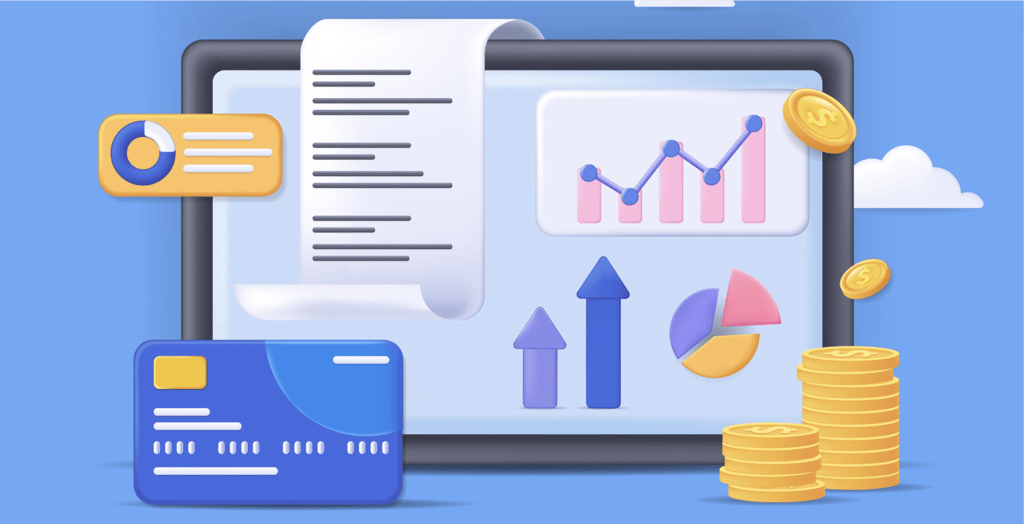Top Accounts Payable KPIs to go after in 2024
Mar 2021

With an avalanche of invoices to pay, processes to keep on top of, and demanding workloads, measuring Accounts Payable metrics might be a lower priority for your finance team. Especially as an IOFM report found the median number of invoices processed by AP teams climbed 28% year-over-year while headcount dropped 12%.
Measuring Accounts Payable performance effectively can have a direct impact on your business objectives. By benchmarking against other organisations and identifying inefficiencies, you can start to streamline your Accounts Payable processes, leading to quicker invoice processing, lower costs, fewer invoice errors and less loss to fraud.
But which are the most important accounts payable metrics and KPIs to focus on?
The Role of Accounts Payable Metrics in 2024
In 2024, businesses have an increased focus on financial performance. The ongoing economic uncertainties post-pandemic, market volatility, and changing consumer behaviour mean companies need to closely monitor their performance and adapt.
Add to this soaring interest rates and inflation, its a very challenging time. Improving accounts payable processes and reporting will definitely be truly beneficial in tackling the issue.
Key metrics for evaluating Accounts Payable performance in 2024
To gain a holistic view, it's important to use a variety of metrics to measure your accounts payable performance.
Let's take a look at the key accounts payable metrics to implement in your business processes:
Invoices received
This one’s a given. You can’t track AP performance without knowing how many invoices you receive. Track invoice numbers in a set period – monthly or quarterly – and you’ll be able to work out other metrics such as discounts achieved, manual interventions required and the average cost per invoice.
Average cost per invoice
Every business process has a cost – from staff time to software subscriptions. Working out your AP costs and dividing them by the number of invoices you process gives you your cost per invoice. This is helpful because it shows you what costs contribute to team overheads and provides a benchmark for monitoring them.
Invoice cycle time
This is the average time it takes from receipt of an invoice to payment. It can tell you whether your processes are fast or flagging. If your cycle time is high, it could mean you have AP processes that need optimising or bottlenecks in your workflow.
Invoices paid on time
Paying your invoices on time makes good business sense. You can avoid late fees, maintain good relationships with suppliers and reduce reputational risk. So, it makes sense to set a high % of on-time payments as an AP metric.
Discounts achieved
Early birds catch payment discounts. For businesses with a lot of invoices, this can represent a significant saving. So, track how many invoices offered an early payment discount and what percentage of those you achieved.
Invoice format
All invoices are not equal. Invoices attached to PO numbers are easier and cheaper to process, as are invoices received electronically compared to hard copy. Tracking the type of invoices you receive – and mapping how this impacts other metrics like average cost or cycle time – can help inform future tactics.
Invoice interventions
Any manual interventions in the AP process take time and cost money. Monitoring the source and nature of interventions is the first step to eliminating them. Using invoice intelligence software can also help reduce the administrative burden of correcting suppliers’ mistakes.
Payment errors
Everyone makes mistakes. But that doesn’t mean payment errors should go unrecorded. Tracking errors like overpayments and duplicate payments can help spot trends and address costly issues. Again, invoice intelligence software can help speed up this process.
Invoices per staff
This accounts payable metric involves measuring the number of invoices you process against the number of full-time or FTE staff you have. It’s a useful benchmark to compare with similar organisations or between teams. Poor performance on this ap metric could indicate that inefficient processes are hampering your team’s potential.
Turnover ratio
The turnover ratio measures how quickly a company makes payments to creditors and suppliers - essentially how good a company is at paying its short-term debts. Turnover ratio can be calculated by dividing a company's total purchases by its average accounts payable balance during the same period. Ideally, you want a higher turnover ratio as it shows you pay your debts more quickly.
Days payable outstanding (DPO)
Days payable outstanding is the average number of days it takes for a company to pay its suppliers (typically quarterly or annually). Managing your days payable outstanding is important as a high DPO can mean you can delay payments and use the cash for short-term investments. But high DPO can also indicate a cash shortage, or lead to your suppliers becoming unhappy - a difficult metric to balance.
Duplicate payments
Duplicate payments is a key accounts payable error metric to keep on top of. A duplicate payment is an additional payment that a company pays to a vendor for the same purchase of goods or services. Reducing the amount of duplicate payments, of course, stops a company losing potentially thousands of dollars, but also improves team morale as there are fewer mistakes. A win-win. Automating accounts payable processes helps to detect duplicate invoices, as does reviewing your company master vendor file regularly.
Invoice processing time
Processing invoices slowly is a sign of inefficiencies in your processes. By having invoice processing as an accounts payable metric, you can benchmark against industry norms to uncover bottlenecks or inefficiencies in your processes. AP automation is key to reducing invoice processing time.
Payment accuracy rate
Payment accuracy rate measures the accuracy of the payments which are made to vendors or suppliers by the accounts payable department. It's calculated by determining the percentage of payments that are made correctly (which can be different criteria such as correct payment amount, paid on time, or correct invoice details) and in accordance with the agreed-upon terms and conditions.
It's a useful metric as it provides insight into the efficiency and effectiveness of the accounts payable team's ability to process payments accurately and avoid errors or discrepancies. So, the higher, the better.
Level of process automation
Research from IOFM shows a direct correlation between Accounts Payable performance and process automation. So, it’s important to measure the level of automation in your AP processes, to be able to set relevant benchmarks and KPIs according to the technology you use.
Comparing the performance of an Accounts Payable team with no automation vs a highly automated, AI-augmented team isn’t helpful or fair. Research from Ardent Partners in 2019 found best-in-class performers – compared to all others – take 7 days less to process a single invoice and the average cost per single invoice is $10 lower.
How to introduce Accounts Payable metrics to your team
Remember, when you’re implementing these KPIs, reassure your Accounts payable team that this isn’t about judging them personally. Introducing Accounts Payable performance measures could easily be interpreted as punitive. Instead, explain that they’re about aligning people, processes and technology to deliver greater efficiency. Some businesses may even tie incentives to these metrics.
Improving efficiency doesn’t just benefit a business, it also frees staff from ineffective, time-consuming and frustrating processes (why your AP manager definitely deserves a raise), so introducing AP metrics is beneficial to everyone involved.
Challenges in Accounts Payable Metrics in 2024
With any reporting, including accounts payable metrics, comes a few challenges.
First up, as businesses grow, invoice processing is becoming more complex with different formats and payment terms, making it harder to handle them accurately. Multiple currencies and languages, complex tax regulations and increased volume create challenges in accurately processing invoices.
Plus, a surge in the number of invoices can overwhelm resources and cause delays or mistakes. Although implementing automation software can improve accuracy, integrating new technology with existing systems can also be tricky, with issues of compatibility, communication between different systems and data security.
Why you should automate your Accounts Payable processes to boost AP efficiency
It's clear that automating your accounts payable processes can save your AP teams' time, effort and stress, whilst boosting efficiency for your AP metrics too.
Streamlined invoice processing
By introducing automation tools to your AP team, you can streamline workflows which can often be a cause of delays to payments and lack of control. AP automation can combine the variety and volume of invoice data sets in one platform. Furthermore, you can access it anywhere, anytime, since it is cloud-based and syncs with other business systems and apps.
Xelix's platform uses a machine-based-learning-approach, and can import huge data sets whilst keeping them up to date, so your employees have relevant data at any time.
Reduction in payment errors and delay
AP automation improves accuracy by reducing manual data entry, making sure you've got accurate invoice and payment information. Automation software can flag any discrepancies or duplicate invoices. Your AP team's time can be spent on more strategic, meaningful tasks, with less room for error and risk. This not only improves your relationships with your vendors, but boosts morale as your team feel confident they have the right tools to perform their best work.
Data-based decisions
Not only can AP automation support your accounts payable metrics, but it also allows you to make more data-based decisions to meet your your goals and objectives. Incorporating AP automation helps you generate real-time reports and dashboards, which give insights and assist with problem solving.
As the world’s first invoice intelligence platform, we offer unique features to maximise AP performance. Powered by AI, our intelligent system effortlessly spots invoicing errors and fraud before you pay out. Whilst our wide range of automations relieve staff of repetitive manual tasks, freeing them up for more strategically valuable work.
Are you tired of monitoring Accounts Payable performance manually?
In a busy Accounts Payable department, manually monitoring and reporting on performance can be a real drain on resources. If you’re tired of tracking AP performance manually, software can help.
Xelix’s AP software has a KPI tracker for all of the metrics above, available via an intuitive user dashboard that makes performance management a breeze.
Performance monitoring is just a fraction of Xelix’s functionality. Xelix Reports module puts the reporting power in your AP team's hands, letting you create customised dashboards and reports that automatically update, so you are constantly on top of your key accounts payable metrics.
Feeling ready to automate your Accounts Payable processes?
Content that may catch your eye





